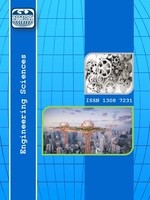ÇELİK STRÜKTÜRLERİN YAŞAM DÖNGÜSÜ İÇİNDE SÜRDÜRÜLEBİLİRLİĞİNİN DEĞERLENDİRİLMESİ
İnsanoğlunun doğal enerji kaynaklarını savurganca kullanması nedeniyle, bu kaynakların giderek azalması ve atmosferde oluşan kirlilik nedeni ile de geri dönüşü olmayan doğa olayları ile karşı karşıya kalındığı günümüzün reddedilemez bir gerçeğidir. Bu bağlamda, çevresel sorunlara neden olan sektörlerin başında gelen yapı sektöründe, doğaya en az zarar veren, geri dönüştürülebilir, enerji etkin tasarıma uygunluk vb kriterlerini yerine getiren yapım sistemleri ve yapı malzemelerinin kullanılması için çalışmalar giderek önem kazanmaktadır. Tasarımcının görevi kağıt üzerinde güzel bir resim oluşturmaktan öte, hayal ettiği yapının tasarımından yıkımına kadar geçirdiği her evrenin, farklı çevresel etkiler oluşturacağını göz önünde bulundurmakdır. Yapım, kullanım ve yıkım aşamalarında yapı malzemelerinin, bileşenlerin ve sistemin nasıl davranış göstereceğini, çevreye olan etkilerini bilmek zorundadır. Yapı sistemlerinin oluşturulmasında kullanılan çelik malzeme, diğer malzemelerle karşılaştırıldığında çok sayıda avantajı bulunmaktadır. Bu çalışmada çelik strüktürlerin yaşam döngüsü içinde sürdürülebilirliği çeşitli kriterler doğrultusunda değerlendirilmiştir.
Anahtar Kelimeler:
Çelik Strüktür, Yaşam Döngösü, Sürdürülebilirlik, Yapı, Yapı Tasarımı,
LIFE CYCLE ASSESMENT OF STEEL STRUCTURES WITHIN THE FRAMEWORK OF SUSTAINABILTY
Due to utilization of natural resources prodigally by the humans, as well as decrease in these resources and the pollution occurring at atmosphere, it is the inevitable reality of today`s world that unrecoverable natural events are experienced. In this context, studies are highly emphasized, that are related with usage of recyclable and energy-efficient construction systems and construction materials bringing the least damage on the nature and complying with design compliance, etc. criteria within the construction sector being one of leading sectors causing environmental matters. Beyond the task of the designer that is creation of a beautiful image on the paper, the designer should consider the fact that each stage of the structure from design to the demolition shall create different environmental impacts. The designer should also know behavior of structure materials, components and the system, as well as their environmental impacts during construction, utilization and demolition stages. Steel material used in formation of structure system has numerous advantages when compared to other materials. In this study, sustainability of steel structures is evaluated on the basis of various criteria within their lifecycle.
Keywords:
Steel Structures, Life Cycle Assessment, Sustainability, Construction, Construction Design, ,
___
- Anon, (1987). World Commission On Environment And Development (WCED).Our Common Future(The Bruntland Report), Oxford University Press, P.43
- Bassam, A.B. and Michael R.S., (2006). Sustainable Steel Construction, Journal Of Construction Steel Research, 62, 117811
- Eren, Ö., (2007). Çelik Yapılar Tasarım Konstrüksiyon Uygulama, Arı Sanat Yayınları, İstanbul.
- Anon, (2002). Society, Sustainability And Civil Engineering-A Strategy And Action Plan, 2002-2003,Institution Of Civil Engineers.
- Rajesh Kumar Singh, I., Murty, H.R., Gupta, S.K., and Diskshit, A.K., (2007). Development Of Composite Sustainability Performance Index For Steel Industry, Ecological Indicators 7, 565-5
- Anon, (2008). Sustainable Steel Constructıon, Building A Better Future, A Sustainability Strategy For the UK Steel Construction Sector Developed By The Steel Construction Sector Sustainability Committee (SCSSC).
- Özdil, Ö.S., (2010). Çelik Yapılar ve Sürdürülebilirlik Türk Yapısal Çelik Derneği
- Kibert, C.J., (2007). Sustainable Construction, Green Building Design and Delivery, John Wiley & Sons, New Jersey, USA. Lawson, R.M., (2009). Sustainability of Steel in Housing and Residential Buildings. SCI Publication pp.370
- Azhar S.A., Carlton, W., Olsen, D., and Ahmad, I., (2011). Building Information Modeling For Sustainable Design And LEED Rating Analysis, Automation and Construction, 217-224.
- Kibert, C.J., Sendzimir, J., and Guy, G.B., (2002). Construction Ecology, Nature as the Basis for Green Buildings, Spon Press, London, UK.
- Bilec, M.M., (2007). A Hybrid Life Cycle Assessment Model for Construction Processes, PhD Thesis, University of Pittsburg School of Engineering, USA. Retrieved April 06, 2009,from http://etd.library. pitt.edu/ ETD/ available/etd-06102007-40343/ unrestricted/ bilec_ July_ 11_2007_7.pdf
- Pollo, R. and Rivotti, A., (2004). Building Sustainability Evaluation in the Building Process: The Construction Phase, Proceedings of the Regional Central and Eastern European Conference on Sustainable Building, Building Research Institute, Warsaw, Poland, October 27-29.
- Gorgolewski, M., Leeding With Steel. Canadian Sheet Steel Building Institute Ley, J., Sansom, M., and Kwan, A., (2002). Material Flow Analaysis Of The UK Steel Construction A sector, Concference Proocieeding From Steel İn Sustainable Construction: IISI World Conferece 2002, Luxembourg, 259-266.
- Büyük, B., (2004). Yalın Üretim. HBS Solutions Bilgisayar ve Yazılım Sist. San. ve Tic.Ltd.Şti.
- Peng, C., Scorpio, D.E., and Kibert, C.J., (1997). Strategies for Successful Construction and Demolition Waste Recycling Operations, Construction Management and Economics, Vol. 15, pp. 49Sustainable Steel Construction The Design And Construction Of Sustainable Buildings(2012) http://Www.Tatasteelconstruction.Com /File_Source/ Staticfiles/Construction/Library/ Sustainable%20steel %20 construction.Pdf
- Helzel, M., (2007). New Meets Old- Stainless Steel in Renovation And Renewal,Euru Inox Building Series Vol 12,Luxembourg. Arsan, D.Z., (2008). Türkiye’de Sürdürülebilir Mimari. Mimarlık, Sayı 340
- Allıen, E., (1999). Fundementals of Building construction Materials and Methods, Jonh&Wiley Sons, New York.
- Görsel kaynaklar, Google image sayfasından alınmıştır. Erturan, B. ve Eren, Ö., (2012). Modüler Yapım Tekniği ile Bina Etkinliğini ve Verimliliğini Geliştirme Yaklaşımının Değerlendirilmesi, Sayı 4, E-New World Science Academy (NWSA), ISSN 1306 3111.
- Başlangıç: 2009
- Yayıncı: E-Journal of New World Sciences Academy
